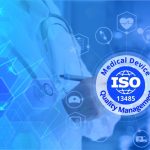
Mastering ISO 13485: A Must-Know Guide for Medical Device Manufacturers
October 22, 2025
Powering Sustainability: Why Reusable Batteries Are the Future
October 22, 2025
Mastering ISO 13485: A Must-Know Guide for Medical Device Manufacturers
October 22, 2025
Powering Sustainability: Why Reusable Batteries Are the Future
October 22, 2025
Accelerate CE Marking: Key RoHS & REACH Compliance Insights
In today’s global medical device market, regulatory compliance is not just about meeting individual country requirements—it’s about building trust and ensuring patient safety.
For manufacturers targeting the European Union (EU) market, compliance with RoHS and REACH is an essential part of the journey toward obtaining the CE mark. These regulations, alongside the EU Medical Device Regulation (EU-MDR), play a critical role in ensuring the safety, environmental sustainability, and overall conformity of medical devices.
This article explores how RoHS and REACH compliance support CE certification requirements for medical devices.
What is RoHS?
RoHS (Restriction of Hazardous Substances Directive) is an EU directive (currently 2011/65/EU as amended by 2015/863) that restricts the use of certain hazardous substances in electrical and electronic equipment (EEE), including medical devices.
It limits the use of:
- Lead (Pb): <0.1%
- Mercury (Hg): <0.1%
- Cadmium (Cd): <0.01%
- Hexavalent chromium (Cr6+): <0.1%
- Polybrominated biphenyls (PBB): <0.1%
- Polybrominated diphenyl ethers (PBDE): <0.1%
- Bis(2-ethylhexyl) phthalate (DEHP): <0.1%
- Butyl benzyl phthalate (BBP): <0.1%
- Dibutyl phthalate (DBP): <0.1%
- Diisobutyl phthalate (DIBP): <0.1%
Why is RoHS important for medical devices?
- While medical devices enjoyed certain exemptions under the earlier versions of RoHS, many categories are now included.
- For instance, from July 2021, many types of medical equipment must fully comply with RoHS limits, unless specific exemptions apply (like where eliminating a substance would compromise the device’s intended purpose or patient safety).
What is REACH?
REACH (Registration, Evaluation, Authorization and Restriction of Chemicals - Regulation (EC) No 1907/2006) is a comprehensive EU regulation concerning chemicals and their safe use.
Key requirements include:
- Substances of Very High Concern (SVHCs): If an article (like a medical device) contains >0.1% w/w of an SVHC, the manufacturer must inform downstream users and, in many cases, notify the European Chemicals Agency (ECHA).
- Ensuring that chemicals used in the manufacture or operation of the device do not pose unacceptable risks to human health or the environment.
Why is REACH important for medical devices?
- Even though medical devices themselves often aren’t directly “registered” under REACH, the materials and components used must comply, especially in terms of SVHC disclosures and restrictions.
How does RoHS & REACH relate to CE certification?
The CE marking on a medical device indicates that it conforms to EU legal requirements, allowing it to be marketed across the European Economic Area (EEA).
While the primary regulation is the EU MDR (Regulation (EU) 2017/745), achieving CE marking often requires demonstrating compliance with a range of other directives and regulations—this is where RoHS and REACH come in.
Under the MDR, manufacturers must:
Managing obsolescence early can bring a lot of long term advantages:
· Reduces last minute design changes
· Saves time and money by avoiding emergency fixes or delays
· Maintains product quality by preventing compromises in materials
· Ensures long term supportability of your product
· Keeps customers happy by avoiding supply issues or performance drops
· Improves risk handling in regulated industries like medical, aerospace, or defense
In short, it's a smart way to protect your project in the long run.
- Demonstrate that their devices are safe and perform as intended.
- Identify and manage risks associated with hazardous substances.
- Meet general safety and performance requirements (GSPR), many of which implicitly demand control over hazardous substances (e.g., avoiding unacceptable chemical, biological, or environmental risks).
Thus, RoHS and REACH compliance directly supports:
- Environmental considerations in GSPR.
- Material safety requirements are met.
- Due diligence documentation required in the technical file submitted to Notified Bodies.
How to achieve RoHS & REACH compliance for CE marking?
1. Conduct a thorough materials assessment
- Identify all materials, coatings, solders, plastics, adhesives, and finishes used in the device.
- Gather declarations of compliance (DoC) from suppliers.
2. Test the components (where needed)
- Perform lab analysis (like X ray Fluorescence XRF, wet chemical analysis) to verify no restricted substances exceed allowed thresholds.
- Work with a reputable, accredited lab to conduct these tests.
3. Maintain technical documentation
- Include RoHS and REACH compliance certificates in the device technical file.
- Ensure traceability of all statements back to material batch levels.
4. Communicate under REACH
- If the device contains >0.1% SVHC, inform customers and downstream users, and notify European Chemicals Agency (ECHA) as required.
5. Stay up to date
- The candidate list of SVHCs under REACH is updated twice a year.
- RoHS exemptions also change; periodically review whether your device still qualifies for any applicable exemptions.
Benefits of RoHS & REACH compliance beyond CE marking
- Environmental responsibility: Minimizing hazardous substances reduces the environmental impact of the medical device at end-of-life.
- Global market access: Many other countries have RoHS-like or REACH-like regulations (China RoHS, Korea REACH, India RoHS, etc.). Compliance in the EU often gives you a head start elsewhere.
- Brand trust: Healthcare providers and patients value manufacturers committed to safety and sustainability.
Conclusion
RoHS and REACH compliance are not just regulatory tick-boxes—they are fundamental to building safe, sustainable, and market-ready medical devices. For any company looking to place devices on the EU market and obtain the CE mark under the MDR, these regulations are integral pieces of the compliance puzzle.
Tip: Integrate RoHS and REACH checks early in your design and supplier selection process. This proactive approach can prevent costly redesigns, reduce time-to-market delays, and ensure smoother CE certification.